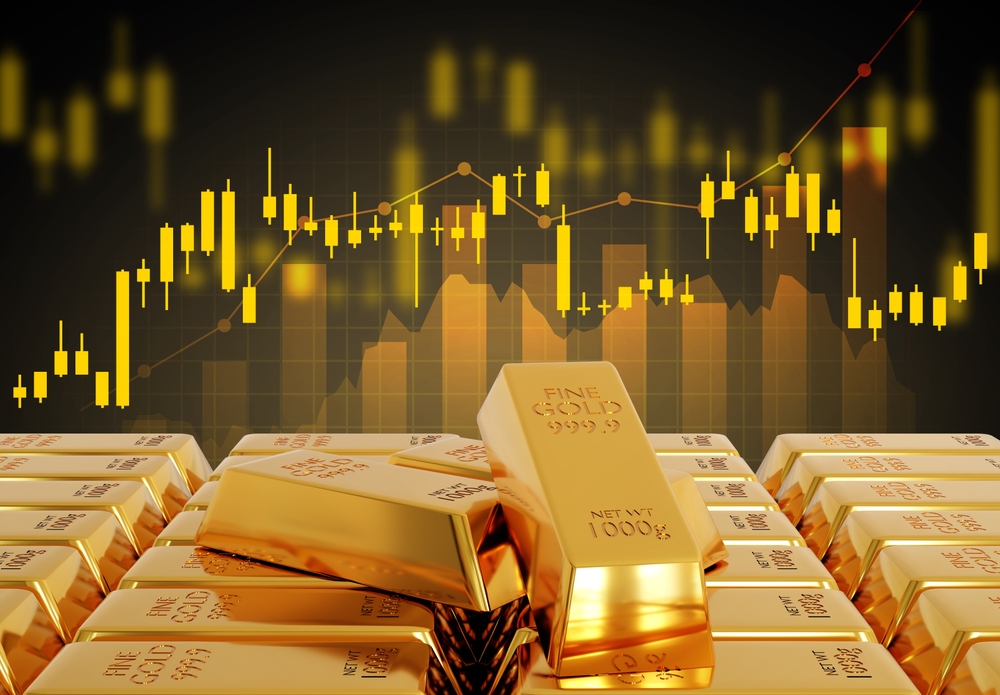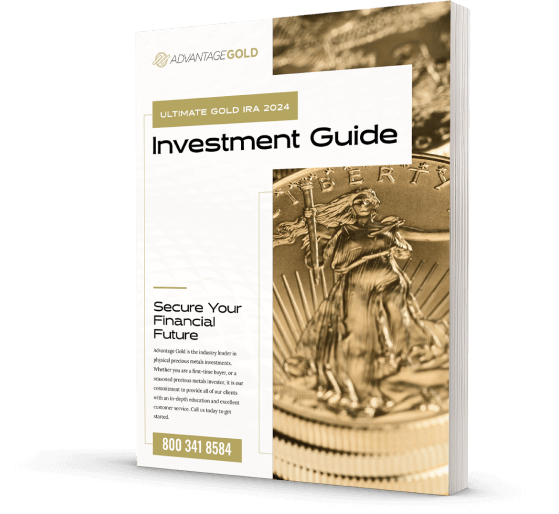
With the digital dollar emerging, investors are keen to know its impact on gold. How will this new currency affect gold prices and investment potential? This article dives into the interplay between the digital dollar and gold, highlighting what you need to know to plan your financial future effectively.

The digital dollar represents a transformative shift in how we perceive and use money. As a form of legal tender in virtual form, the digital dollar is poised to revolutionize financial transactions. Unlike physical cash, which we can touch and feel, digital dollars exist purely in an electronic form, facilitating seamless transactions across digital platforms.
Central bank digital currencies (CBDCs), like the digital dollar, are backed by the government, ensuring their stability and reliability. The Federal Reserve, the cornerstone of the U.S. financial system, would regulate and manage a U.S. central bank digital currency, embedding it within existing federal regulations. This integration ensures that the digital dollar operates within a robust legal framework, distinguishing it from decentralized cryptocurrencies and central banks.
One of the key differentiators of a digital dollar is its centralization. Unlike cryptocurrencies that operate on decentralized networks, a CBDC would be centralized and governed by federal regulations. This centralization aims to provide a secure and stable financial system, mitigating the volatility often associated with cryptocurrencies.
The potential benefits of a digital dollar are extensive. It promises faster transactions, reducing the time it takes for financial transactions to clear and settle. This efficiency could expand consumer access to the financial system, making it more inclusive and accessible to a broader audience. Imagine a world where transferring money is as easy and instant as sending a text message.
However, the journey toward a digital dollar is not without its challenges. Privacy concerns are paramount, as the digital nature of these transactions could lead to increased government oversight. Balancing transparency with privacy will be crucial in gaining public trust and ensuring widespread adoption.
The necessity of a digital dollar also stems from the need to maintain the U.S. dollar’s global dominance. As other countries develop their own digital currencies, like the digital yuan, the U.S. must innovate to stay competitive. This global race underscores the importance of staying ahead in the digital currency landscape.
Understanding these dynamics is crucial as we move forward. The digital dollar is not just a theoretical concept but a potential reality that could reshape our financial system. Comprehending its benefits and challenges helps us prepare for its integration into our daily lives and financial strategies.

The introduction of a digital dollar could significantly influence gold prices, a relationship rooted in economic principles and historical precedents. The Federal Reserve’s ability to inject money directly into the economy using a digital dollar could lead to increased inflation, which often drives investors towards gold as a stable asset. Inflation erodes the purchasing power of fiat currencies, making gold an attractive hedge.
During periods of high inflation, gold’s value tends to rise as it is perceived as a stable store of value. This was evident during the Great Depression when gold’s appeal surged amid declining trust in paper money. Similarly, during the 2008 financial crisis and the COVID-19 pandemic, gold prices rose significantly as investors sought refuge from economic instability.
The dynamics of a digital dollar could accelerate these trends. Digital dollars could lead to a quicker rise in consumer prices compared to physical gold, which typically preserves its value better during inflationary periods. As digital dollars are created, the purchasing power of traditional dollars might diminish, further driving demand for gold.
Interest rates also play a crucial role in this interplay. Policies related to a digital dollar could influence interest rates, which in turn affect gold prices. Generally, higher interest rates lead to higher opportunity costs for holding non-yielding assets like gold, potentially lowering its price. Conversely, lower interest rates make gold more attractive.
Historical events consistently show that economic upheaval tends to drive up the value of gold and silver as investors seek stability. This pattern suggests that the introduction of a digital dollar, with its potential to alter economic conditions, could similarly impact gold and silver prices.
Understanding these potential impacts allows investors to make informed decisions. As we navigate this evolving financial landscape, the relationship between digital currencies and traditional assets like gold will be crucial in shaping investment strategies.

Investing in gold could become more attractive with the advent of a digital dollar, offering multiple benefits to investors. One of the primary advantages is the potential reduction or elimination of transaction fees. Digital dollars could streamline financial transactions, making gold investments more cost-effective.
Speed and efficiency are at the heart of digital currency benefits. Payments for gold investments would clear instantly, driving prompt transaction completion and reducing the time and effort needed in traditional banking systems. This immediacy enhances liquidity, allowing investors to manage their assets more effectively.
Digital wallets, a key component of the digital dollar ecosystem, simplify financial management. They provide secure storage and management of both digital dollars and digital assets, making it easier for a larger audience to access and manage their investments. This increased accessibility could democratize gold investments, enabling more people to safeguard their wealth through precious metals.
Gold ETFs might also see increased demand influenced by the adoption of digital dollars. As digital currencies become more integrated into the financial system, the landscape for gold investments could expand, offering new opportunities for diversification.
Enhanced liquidity is another significant benefit. The ability to clear payments instantly means that investors can quickly react to market changes, buying or selling gold with unprecedented speed. This agility is crucial in a fast-paced financial environment where opportunities can be fleeting.
Embracing technology’s opportunities, the digital dollar could support faster and cheaper payments, enhancing the overall investment experience for financial institutions. This synergy between digital innovation and traditional assets like gold could create a robust framework for future financial stability.
The digital dollar and gold, two seemingly disparate entities, are poised to reshape our financial future. The digital dollar promises faster transactions, broader financial inclusion, and reduced costs, while gold remains a steadfast store of value amidst economic uncertainty.
Understanding the mechanics of a digital dollar and its potential impacts on gold prices is crucial for investors. Historical trends and economic principles suggest that gold will continue to play a significant role as a hedge against inflation and monetary instability.
As we move forward, integrating digital dollars into gold investment strategies could offer numerous benefits, from reduced transaction fees to enhanced liquidity. This evolving financial landscape presents both challenges and opportunities, inspiring us to stay informed and proactive in our investment decisions.
A digital dollar is a virtual form of legal tender used for transactions, regulated by the Federal Reserve and backed by the U.S. government. It represents a modern evolution of currency in the digital age.
A digital dollar differs from cryptocurrencies in that it is a centralized currency regulated by the government, whereas cryptocurrencies operate on decentralized networks without centralized control.
The potential introduction of a digital dollar may elevate inflationary pressures, prompting investors to seek gold as a safe haven, which could subsequently drive up gold prices.
Utilizing a digital dollar for gold investments offers reduced transaction fees and faster payment clearing, which enhances financial management through digital wallets and increases liquidity. These advantages can significantly streamline your investment process.
Yes, concerns exist regarding privacy and the potential for increased government oversight of financial transactions with a digital dollar.

Please note that Advantage Gold and its representatives are not licensed or registered investment advisers, attorneys, CPA’s or other financial service professionals. We do not offer or render any legal, tax, accounting, investment advice or professional services. Additionally be aware that precious metals carry risk of loss and are not a suitable investment for everyone. Past performance is not necessarily indicative of future results and you should always consult your financial and tax professional and carefully evaluate all risks associated with the acquisition of precious metals before making the investment.
The statements made on this website are opinions of Advantage Gold LLC. Past performance is not necessarily indicative of future results. Precious metals, Gold American Eagles, Proof Gold American Eagles, certified gold coins, as well as gold and silver bars carry risk and investing in precious metals directly or through an IRA is not suitable for all investors. Precious metals and coins (i.e. Canadian Gold Maples, Canadian Silver Maples, American Gold Eagles, American Silver Eagles, Proof Gold American Eagles, Proof Silver American Eagles, Certified Gold American Eagles, Numismatic Gold Coins) may appreciate, depreciate, or stay the same depending on a variety of factors. Precious metals can and will fluctuate unexpectedly. Advantage Gold cannot guarantee, and makes no representation, that any metals purchased (i.e. .999 gold bars, .9999 silver bars, or any gold coins) will appreciate at all or appreciate sufficiently to produce a profit above and beyond the mark up/ commissions charged whether they are bought for direct delivery or inside of a precious metals IRA. The decision to purchase or sell precious metals with cash or inside of a Gold IRA or a Gold Backed IRA, and which precious metals to purchase or sell, are the customer’s decision alone, and purchases and sales should be made subject to the customer’s own research, prudence and judgment. By accessing any Advantage Gold content, you agree to be bound by the terms of service. Review the terms of service and privacy policy.
*Consult your tax Advisor.